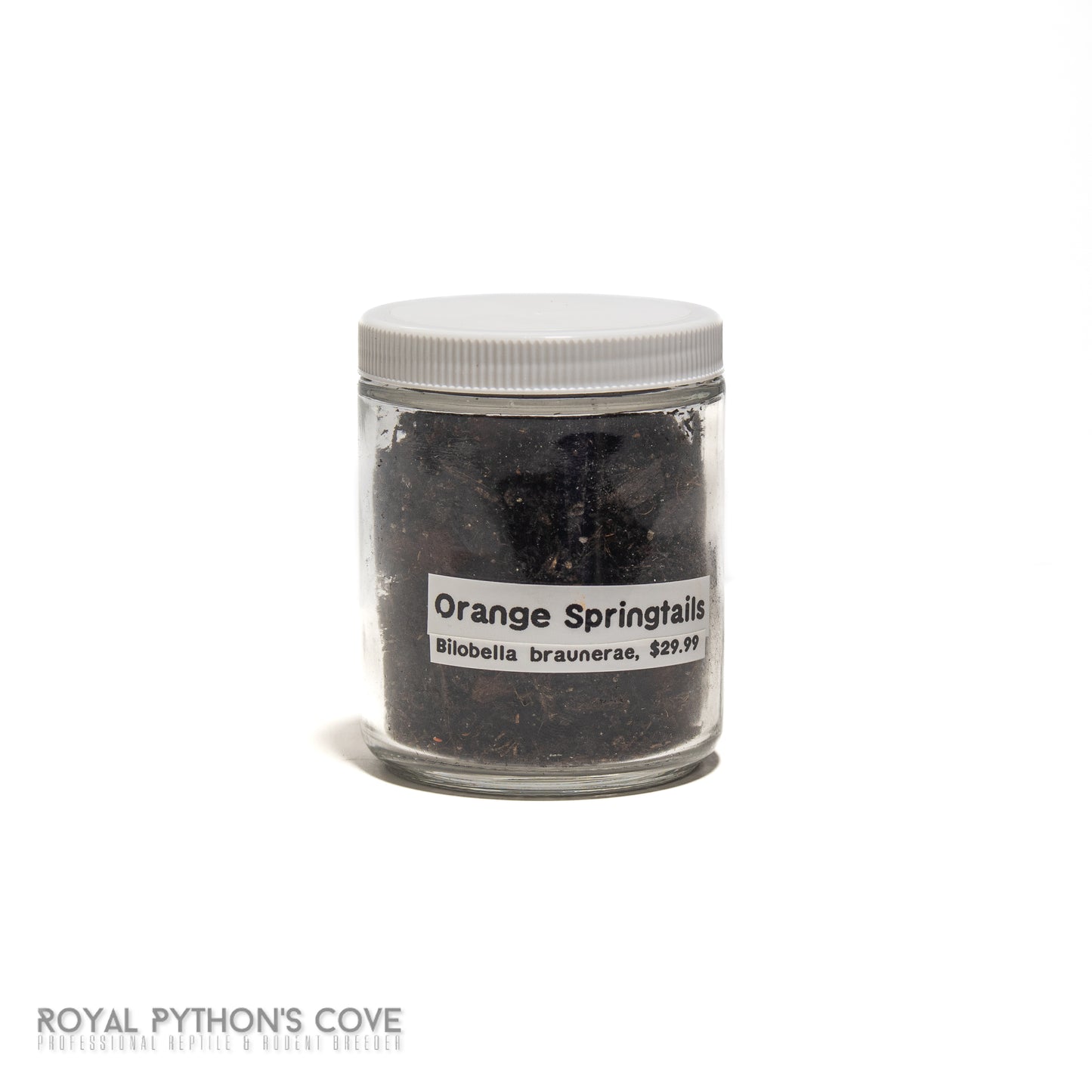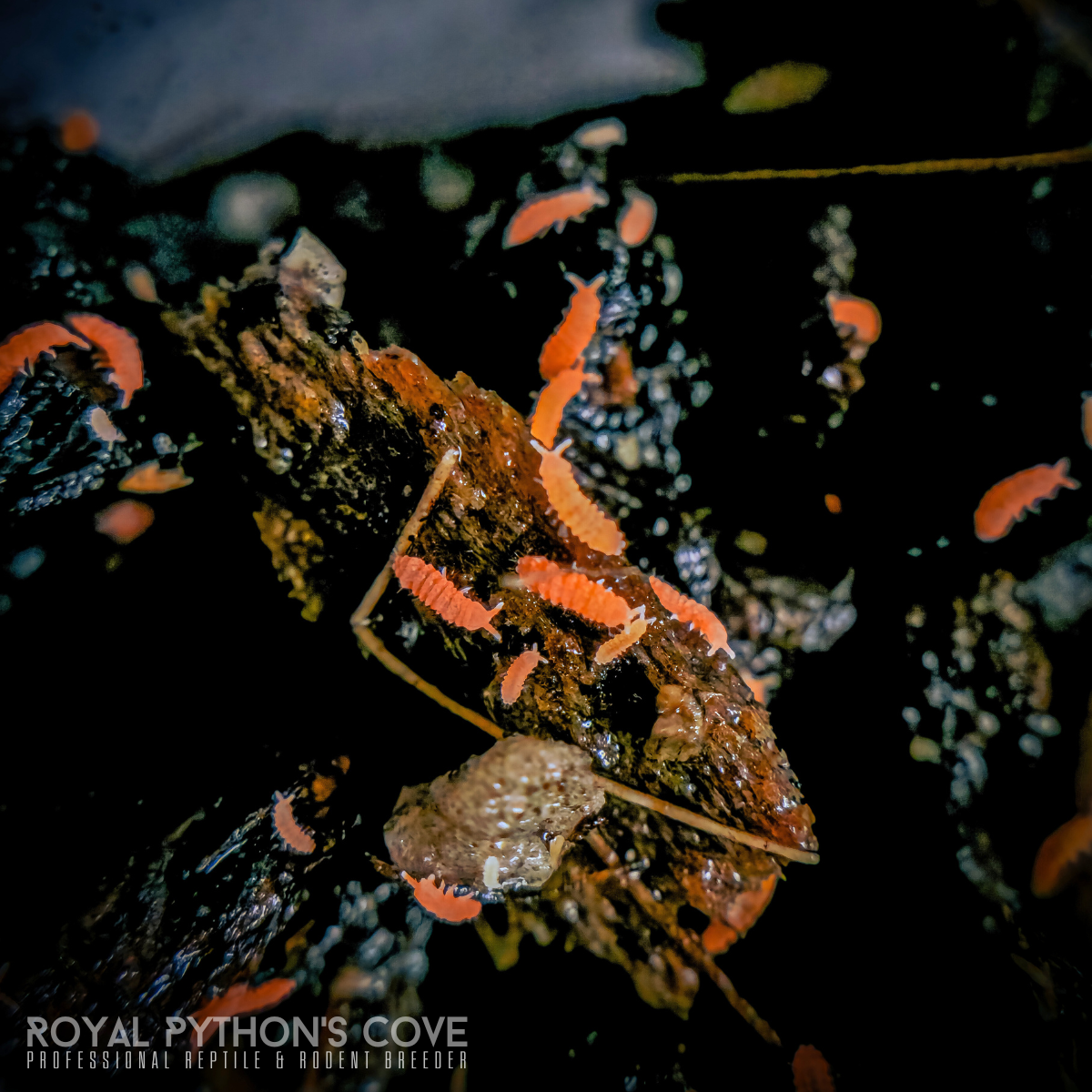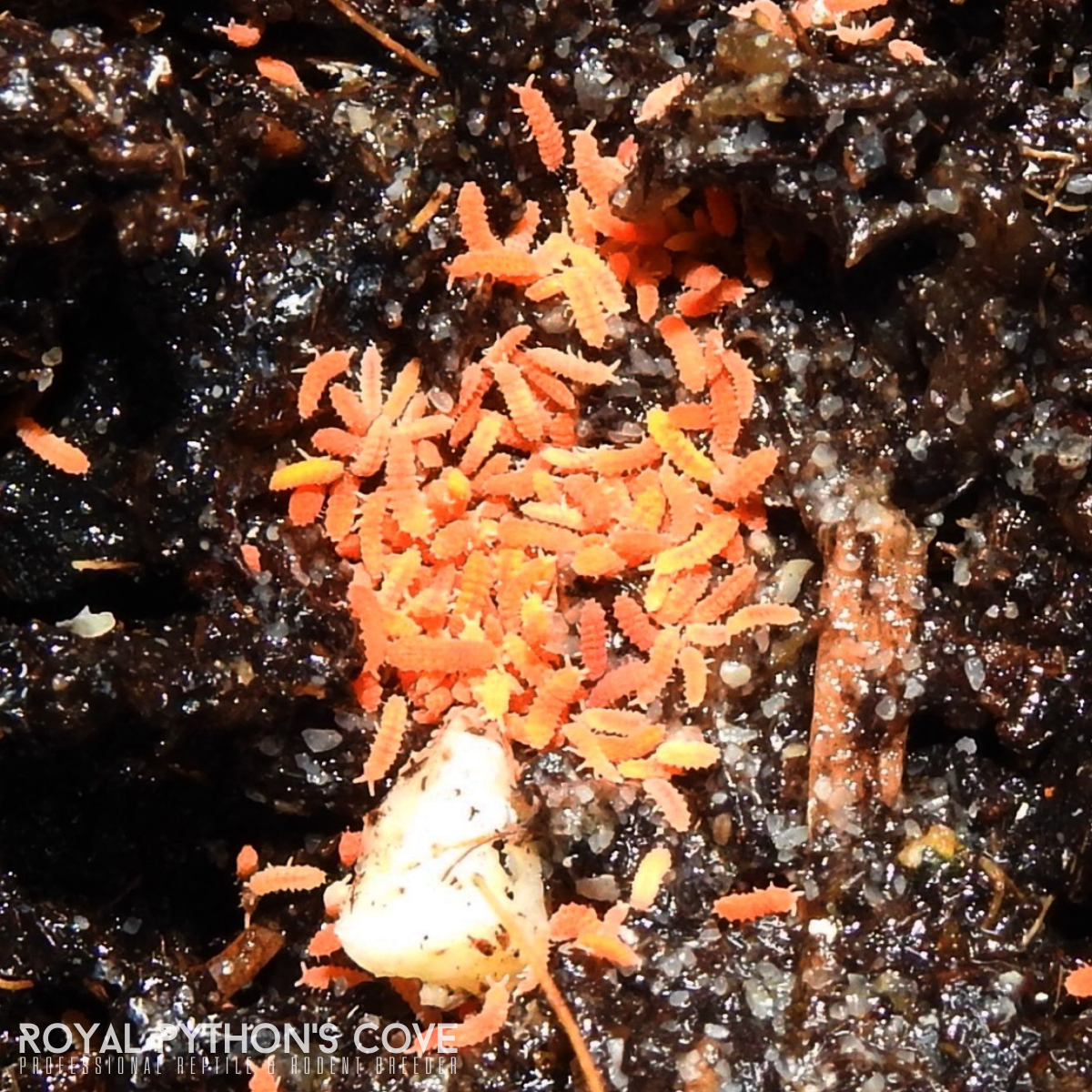Royal Python's Cove
Bilobella braunerae "Orange" Springtails
Bilobella braunerae "Orange" Springtails
Couldn't load pickup availability
Bilobella braunerae: Functional Ecosystem Contributors
Orange Springtails (Bilobella braunerae) are essential detritivorous microscopic organisms in vivarium ecosystems, serving as effective cleanup crews and enhancing habitat health. Here’s a detailed overview of their functions, preferred habitat, thriving conditions, and suitable cohabitants.
Functions in Vivarium Ecosystems
-
Decomposition: Orange springtails excel at breaking down decaying organic matter, which helps maintain clean and balanced substrate conditions.
-
Nutrient Cycling: Through their waste, they recycle nutrients back into the soil, enriching the substrate and supporting healthy plant growth.
-
Bioactive Cleanup Crew: They feed on leftover food, mold, and detritus, reducing the risk of mold outbreaks and pests in the vivarium.
-
Soil Aeration: While not burrowing like isopods, their movement through the substrate helps maintain soil structure and aeration.
Preferred Habitat
-
Substrate: Flourish in moist substrates rich in organic matter, such as coconut fiber, leaf litter, or compost.
-
Moisture Levels: Prefer moderate to high humidity (50-70%) to prevent drying out.
-
Temperature: Thrive within an ideal temperature range of 68-75°F (20-24°C), with tolerance for slight fluctuations.
-
Ventilation: Require good ventilation to prevent stagnant air and ensure optimal oxygen levels.
Thriving Conditions
To optimize conditions for Orange Springtails, consider the following:
-
Hydration: Regular misting is essential to maintain humidity, along with areas of moist substrate for retreat.
-
Feeding: Provide a diet of decomposing plant matter, yeast, and sometimes powdered foods to support their growth.
-
Substrate Depth: A depth of at least 1-2 inches allows for sufficient movement and access to food sources.
-
Compatibility: Avoid overcrowding and ensure plenty of hiding spots to create a healthy environment.
Recommended Cohabitation
Enhance the diversity and functionality of your vivarium by cohabitating Bilobella braunerae with:
-
Powder Orange Isopods (Porcellionides pruinosus): They work together in decomposing organic matter and nutrient cycling.
-
Dwarf White Isopods (Trichorhina tomentosa): Both species contribute to substrate maintenance and nutrient cycling.
-
Earthworms: Living beneath the substrate, they improve aeration and nutrient enrichment, benefiting the overall ecosystem.
By fostering a balanced ecosystem with these inhabitants, you can create a thriving vivarium that supports plant health, maintains cleanliness, and enriches the habitat for all its inhabitants.
Share







